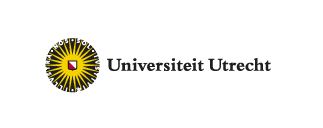Utrecht University
Prepare to ensure a smooth implementation
![Overview of the ‘Grande Galerie’ [grand gallery] at Utrecht University Library, City Center. Overview of the ‘Grande Galerie’ [grand gallery] at Utrecht University Library, City Center.](/content/marketing/publish/en_us/member-stories/utrecht-wms/jcr%3acontent/par/highlightbox_8cc8/highlightbox/parsyscolumncontrol_/col0/image_158f.img.jpg/1756909586184.jpg)

"The ultimate goal for any library would be to enhance the end-user services. And yet, during this implementation process our end users were only indirectly impacted—our first goal was to enhance our back-office processes. However, this should result in better services for our users."
Saskia Franken
Project Manager, Utrecht University Library
Utrecht University is a leading research university in the Netherlands that scores high in international rankings. The library offers professional support in every phase of the research cycle. Since 1998, staff at the library of Utrecht University had been working with a library system that was created for processing physical documents. With online content being an increasingly large part of library collections, they knew it really was time to update the system. However, letting go of a 20-year-old system that was highly tailored to the library’s needs took some getting used to for some library staff.
The management of the library wanted more standardization and a better connection to international standards to make their workflows more efficient. “This is why we started working with the international WorldCat® catalog back in 2016, and why we were applying more and more international metadata regulatory systems and formats,” explained Saskia Franken, Project Manager at Utrecht University Library. “A new library system was the logical next step.”
"WMS has allowed us to make the transition to a modern, internationally oriented, and integrated library management system in the cloud."
“The transition was quite a big learning moment,” Saskia said. Introducing WorldShare® Management Services (WMS) affected almost every single department of the library. One in four staff members were actively involved in the project, convening with the taskforce on a bi-weekly basis for almost nine months. “Our legacy system was completely attuned to ‘Utrecht.’ It was easy to quickly change things when needed, so it took some getting used to working in an international, shared environment,” she added. Converting more than 3.5 million holdings was a huge operation: preparations took five months, while the actual conversion took two months. And the loan and user data conversion took even longer. However, OCLC was there to help every step of the way.
“We were so happy with OCLC’s help during the transition. Especially the people who did the trainings and helped us with the implementation process. They talked things through with us and really took the time to answer our countless questions. That really helped us get through this long, intensive, and complicated project.” WMS’s flexible workflows allow the library staff to rethink how they want to work. “This will be one of our focus points in the coming period,” Saskia added.
The library went live with WMS in two phases. By the time the second phase launched, Saskia explained, “The whole country was in full COVID-19 lockdown, so the launch was only a technical one. The library was closed, but our staff did start working with WMS. It was hard to work remotely and help colleagues on the job at the same time!”
Already, WMS has helped the library staff process digital materials. “We set up robust interfaces, connected to the university’s architecture using the WorldShare APIs,” said Saskia. “We now use the WorldShare infrastructure for all large library processes. The two key takeaways from that are that we no longer need to maintain our data in two disparate knowledge bases, and that it allows us to use the full functionality of Tipasa®, OCLC’s cloud-based resource sharing solution. Oh, and being able to work remotely in times of need was also big!”
Services used by Utrecht University
Location
- Utrecht, Utrecht, the Netherlands
- Founded in 1584 and has approximately 3.5 million holdings
- The special collections department holds unique, valuable, and rare early printed works, manuscripts, maps, globes, sheet music, and other special materials
- Serves 32,300 students and 5,865 staff (3,244 researchers/teachers) with 1,750,000 library users across 2 branches
- Supports the university, which produces 8,000 scientific publications a year
Related stories

Combine academic and public libraries for increased service
See how the University of Applied Sciences Wiener Neustadt and the Wiener Neustadt public library combined their collections to reach a broader audience.

Cooperate and innovate to secure the future of libraries
Learn how the Complutense University Library participates in global projects to benefit all libraries.